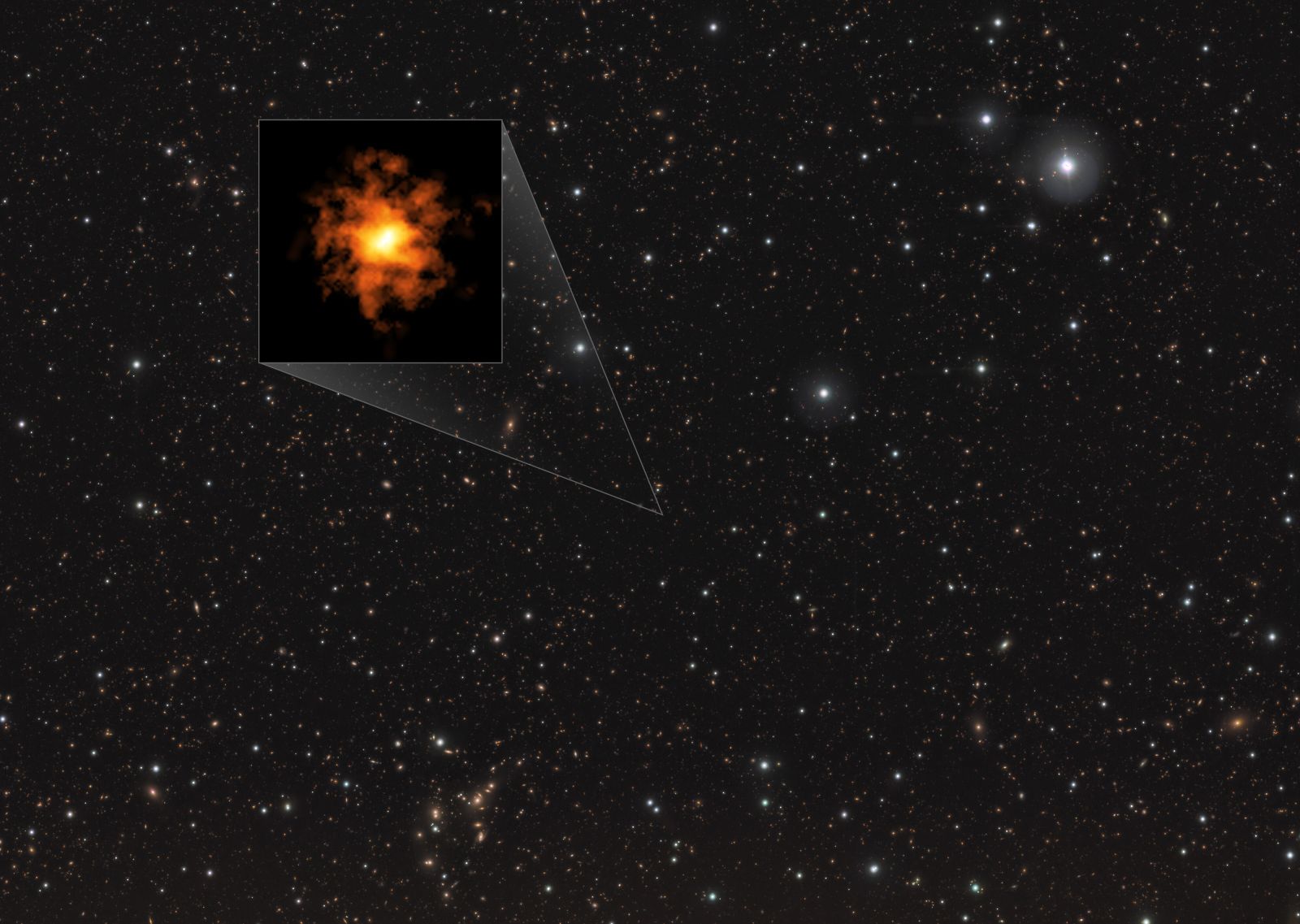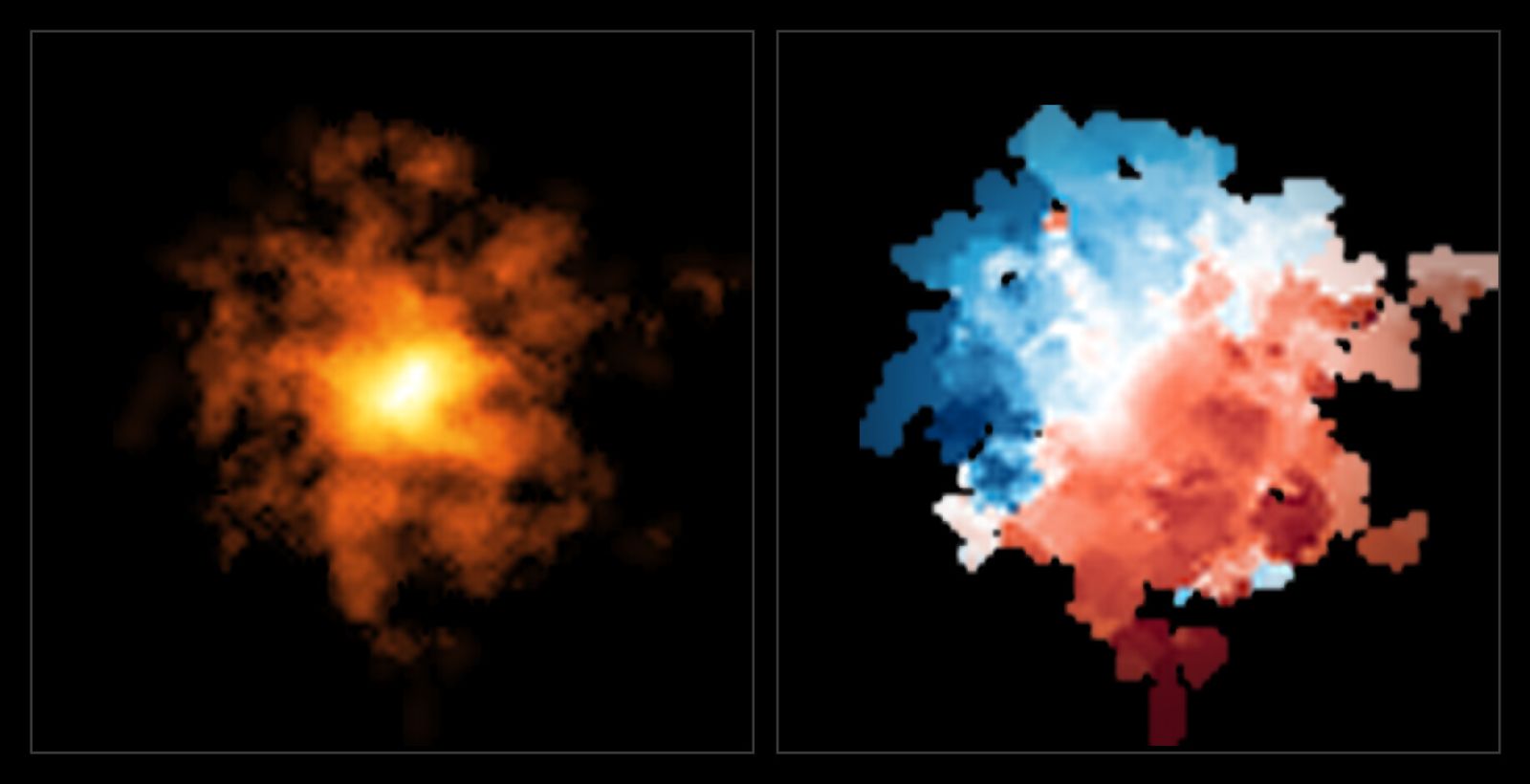Follow us on Google News (click on ☆)

This image shows the galaxy REBELS-25 observed by ALMA (Atacama Large Millimeter/submillimeter Array), overlaid with an infrared image of other stars and galaxies. The infrared image was taken by VISTA (Visible and Infrared Survey Telescope for Astronomy) from ESO.
In a recent study, researchers found evidence that REBELS-25 is a rapidly rotating disk galaxy that existed only 700 million years after the Big Bang. This makes it the most distant and earliest known galaxy to date, similar to the Milky Way.
Credit: ALMA (ESO/NAOJ/NRAO)/L. Rowland et al./ESO/J. Dunlop et al. Ack.: CASU, CALET
Researchers have discovered the most distant galaxy similar to the Milky Way ever observed.
Named REBELS-25, this disk galaxy appears as organized as current galaxies, yet we see it as it was when the Universe was only 700 million years old. This is surprising because, according to our current understanding of galaxy formation, the oldest galaxies should be more chaotic.
The rotation and structure of REBELS-25 were revealed thanks to ALMA (Atacama Large Millimeter/submillimeter Array), of which the European Southern Observatory (ESO) is a partner.
The galaxies we see today have evolved significantly from the chaotic and disordered galaxies that astronomers typically observe at the earliest moments of the Universe. "According to our understanding of galaxy formation, we expect most primitive galaxies to be small and disordered," explains Jacqueline Hodge, an astronomer at Leiden University in the Netherlands and co-author of the study.
These disordered primitive galaxies merge with one another, then slowly evolve into smoother shapes at an incredibly slow pace. Current theories suggest that for a galaxy to be as organized as our Milky Way—a rotating disk with orderly structures like spiral arms—billions of years of evolution must have passed. The detection of REBELS-25 challenges this timeline.

This image of the galaxy REBELS-25 was taken by ALMA (Atacama Large Millimeter/submillimeter Array), an international facility of which ESO is a partner.
The left panel shows how cold gas is distributed within the galaxy, presenting hints of an elongated bar structure at its center.
The right panel shows the motion of cold gas in the galaxy. The blue color indicates movement toward Earth, and the red color indicates movement away from Earth, with the darker shade representing faster motion. In this case, the red-blue distribution in the image clearly demonstrates that the object is rotating, making REBELS-25 the most distant rotating disk galaxy ever discovered.
Credit: ALMA (ESO/NAOJ/NRAO)/L. Rowland et al.
In this study, which has been accepted for publication in the Monthly Notices of the Royal Astronomical Society, astronomers discovered that REBELS-25 is the most distant rotating disk galaxy ever found. The light reaching us from this galaxy was emitted when the Universe was only 700 million years old, just 5% of its current age (13.8 billion), making REBELS-25's ordered rotation unexpected.
"Seeing a galaxy with such similarities to our Milky Way, which is strongly dominated by rotation, challenges our understanding of how quickly galaxies in the early Universe evolve into the organized galaxies of the present-day cosmos," explains Lucie Rowland, a PhD candidate at Leiden University and the study's lead author.
REBELS-25 was initially detected during earlier observations conducted by the same team, also with ALMA, located in the Atacama Desert in Chile. At the time, it was an exciting discovery, showing signs of rotation, but the data resolution was not fine enough to be certain.
To properly discern the galaxy's structure and motion, the team conducted follow-up observations with ALMA at a higher resolution, confirming the galaxy's record-breaking nature. "ALMA is the only existing telescope with the sensitivity and resolution needed to achieve this result," explains Renske Smit, a researcher at Liverpool John Moores University in the UK and a co-author of the study.
Surprisingly, the data also hint at more developed features similar to those in the Milky Way, such as an elongated central bar and even spiral arms, although further observations are needed to confirm this. "Finding further evidence of more evolved structures would be an exciting discovery, as it would make it the most distant galaxy with such structures observed to date," says Lucie Rowland.
These future observations of REBELS-25, along with other discoveries of early rotating galaxies, could transform our understanding of early galaxy formation and the evolution of the Universe as a whole.